Creative collaboration has been a practice that Swedish designer Anny Wang and architect Tim Söderström, the duo behind Wang & Söderström, have indulged in from the very beginning of their relationship.
Their aesthetic exploration across mediums aims to bridge the physical and digital realms in an effort to better understand which human values are important to bring with us into the future. Growing up in both the analogue and digital age, they have taken inspiration from the best of both worlds, and with the ambition to throw out pre-existing conventions regarding the digital and create more meaningful connections, Wang & Söderström wants to inspire us to look at materials and technology in a new way.
We spoke with Wang & Söderström about creativity, curiosity and multi-generational inspiration.
How did you find each other and what inspired you to work together?
We met in 2011 at a Friday bar at the Royal Danish Academy, when Anny was visiting a friend that was studying at the same school as Tim. When we became a couple in 2012, we quickly noticed a natural way of bouncing ideas and helping each other during our university studies. Collaborating creatively has been with us from the start.
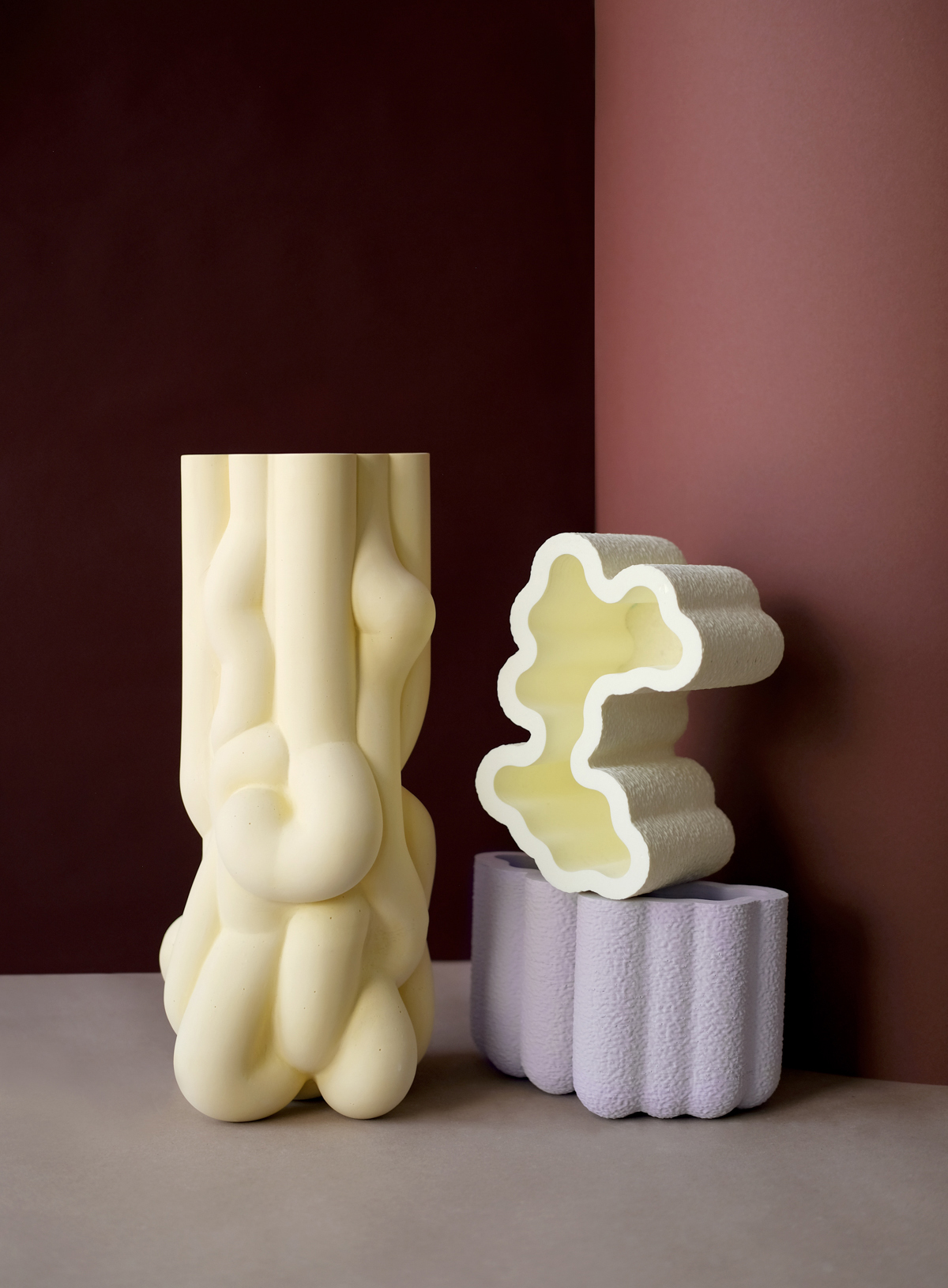 | 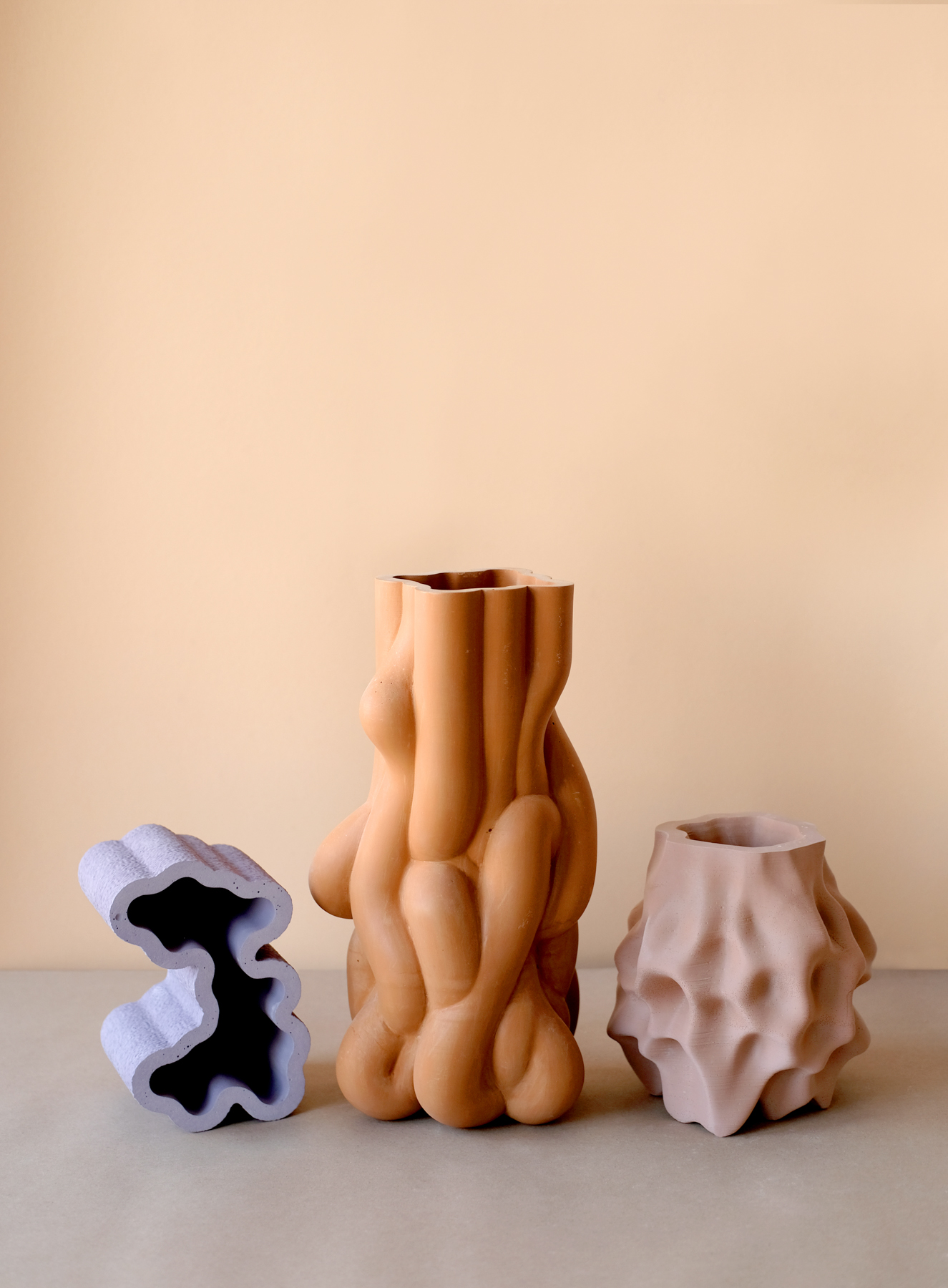 |
 |  |
Above: Low Tide Collection by Wang & Söderström
You work with both the digital and physical reams; how did this come about?
We have a background in spatial design and architecture and discovered 3D software during our time at university. We immediately got hooked by the endless possibilities that the different 3D software offered. That led to nights and weekends where we taught ourselves the software and began experimenting with surreal renderings.
This in-between state, how we work in between creative fields and in between the analogue and digital worlds is something that, we think, stems from our upbringing. We are part of a generation that remembers the floppy disk and the home phone, but we were also there when digitization really took off and grew up with technology at our fingertips.
We could download any software we wanted and we started to learn how to do our own video games or play around in Photoshop, but back then there was no Youtube full of tutorials so we had to figure out what to do in these softwares ourselves. In a way, we hardwired our brains to function in this landscape and we still have that same thought with us today — that if we don’t know how to do it, we will learn it.
Since we started our practice, it has become more and more clear to us how important the human senses and physical understanding within the digital world are. But also that we no longer can ignore the potential of digital experiences and how technology and digital media can be used to help stimulate the senses and enhance the perception of a place, a material or an object.
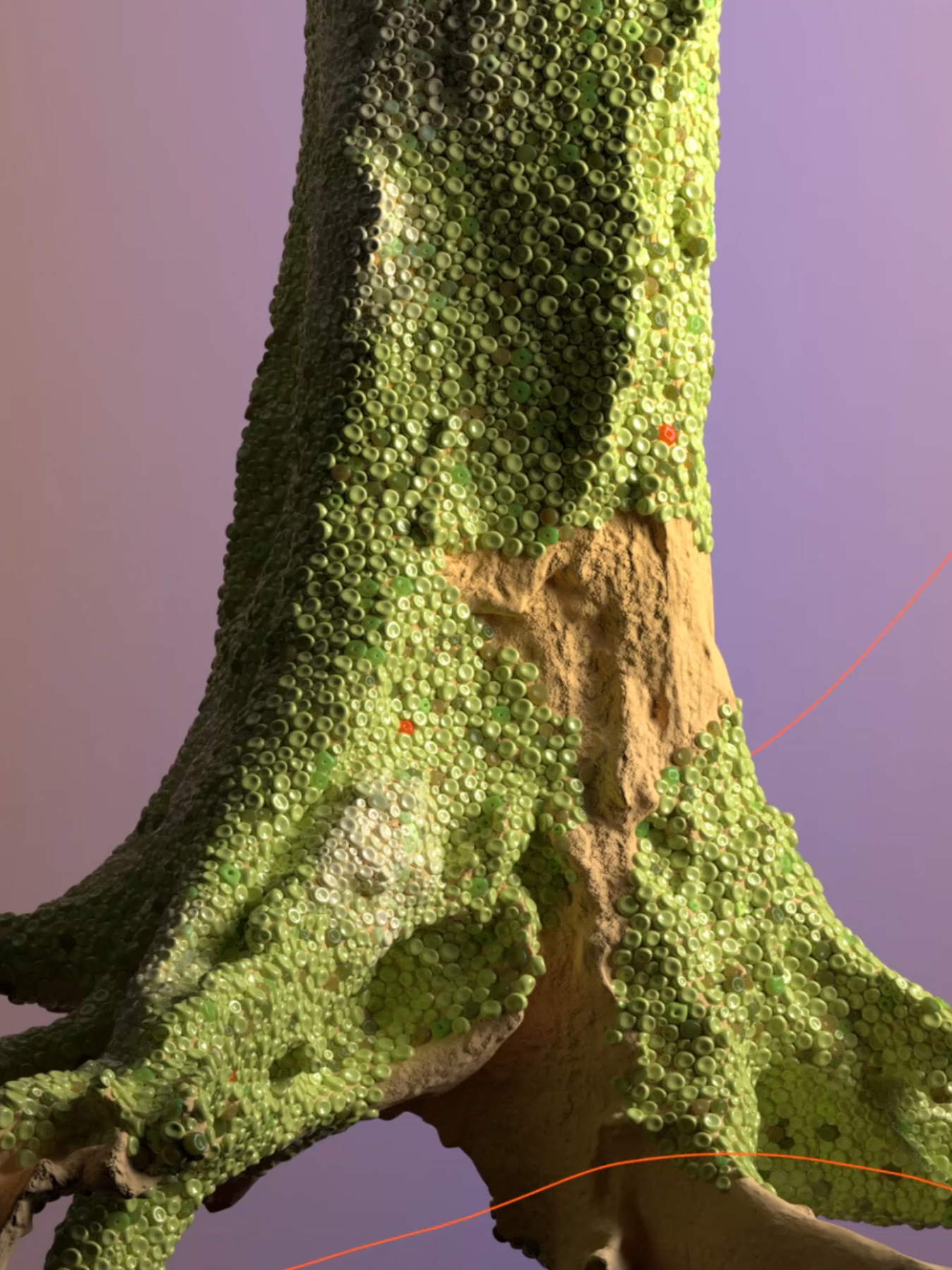 |  |
Above: Growth Digital Exhibition at Stockholm Furniture Fair by Wang & Söderström
What role do you see each media playing in your projects? Do you each have a favourite that you are particularly inspired by?
Our projects have different outcomes where technique, medium and results might vary, but the method is kind of the same.
We approach each project with the same mindset. Bridging the physical and digital. This is extended by an emphasis on the emotional and tactile side of materials, objects and textures to give the digital a more human-relatable quality.
This is also the reason we see art and design as a conversation rather than locked to a specific medium.
Seeing the physical and digital as equals can keep us from being overly biased towards a particular medium. If the project allows it, we strive to make the collaboration between digital and physical emerge from the design process rather than being predetermined from the start.
We ask ourselves: what do we want to tell? What do we want people to feel? Maybe it is a screen or maybe it is an augmented experience or a tactile sculpture. Whatever medium that can carry out the idea best.
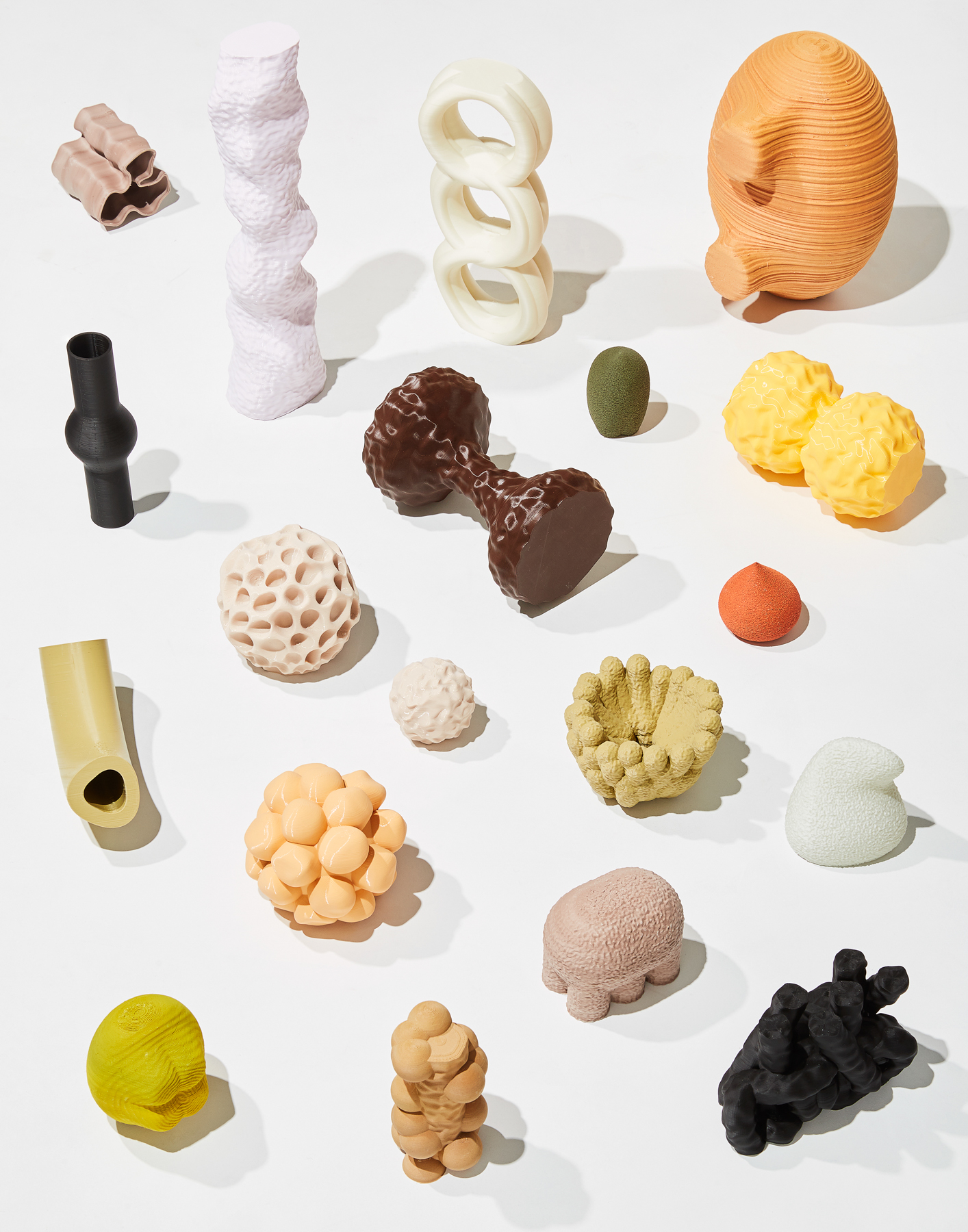 | 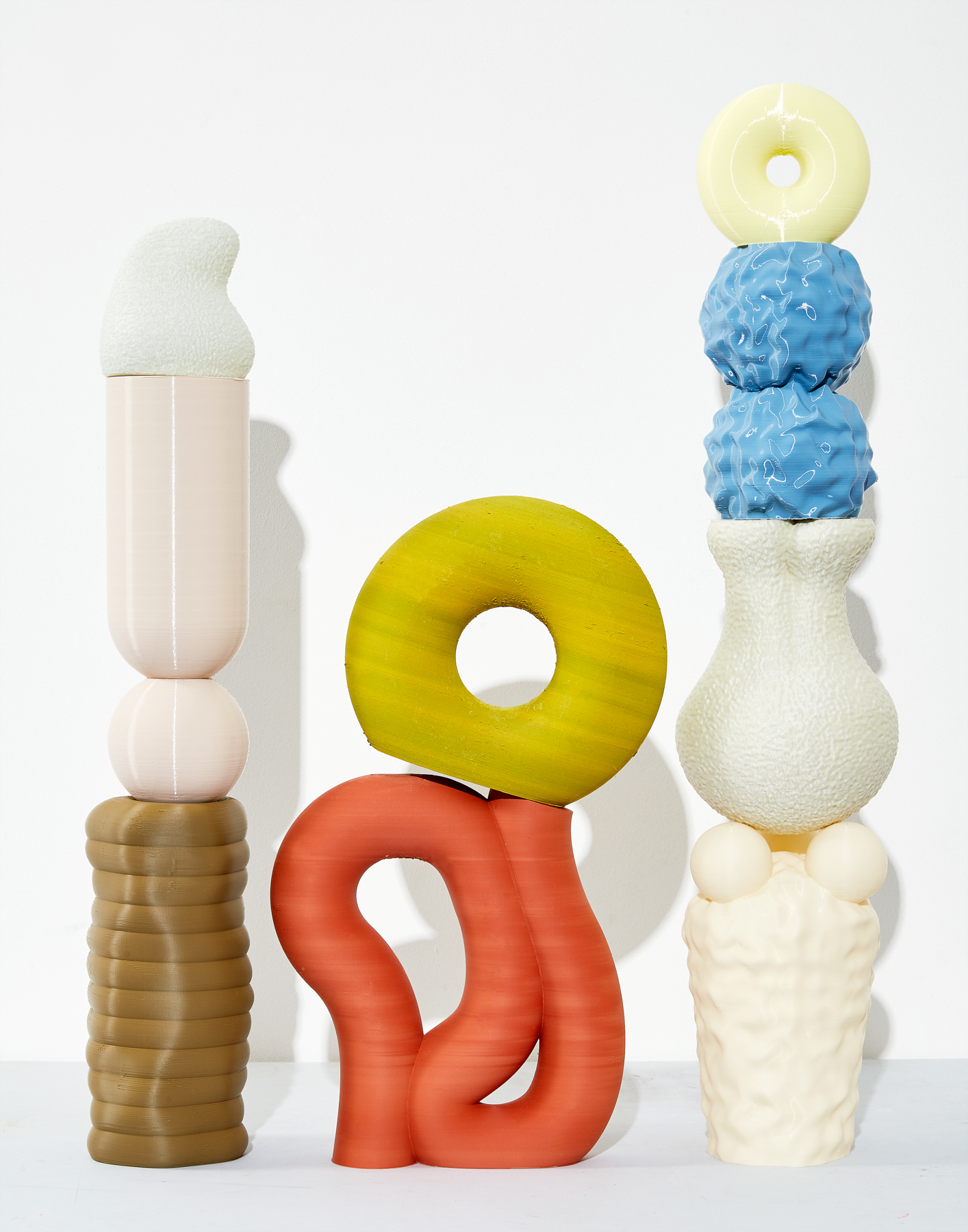 |
Above: Wang & Söderström Sculptures
Can you tell me a bit about what your shared creative process is like?
Since we work very broadly, the creative process from idea to end in its practical work looks very different. We approach each project with the same mindset and the common ground for all projects is the digital origin. We often start our sketching and designs in 3D software, regardless of whether the outcome will result in a physical or virtual piece.
 |  |
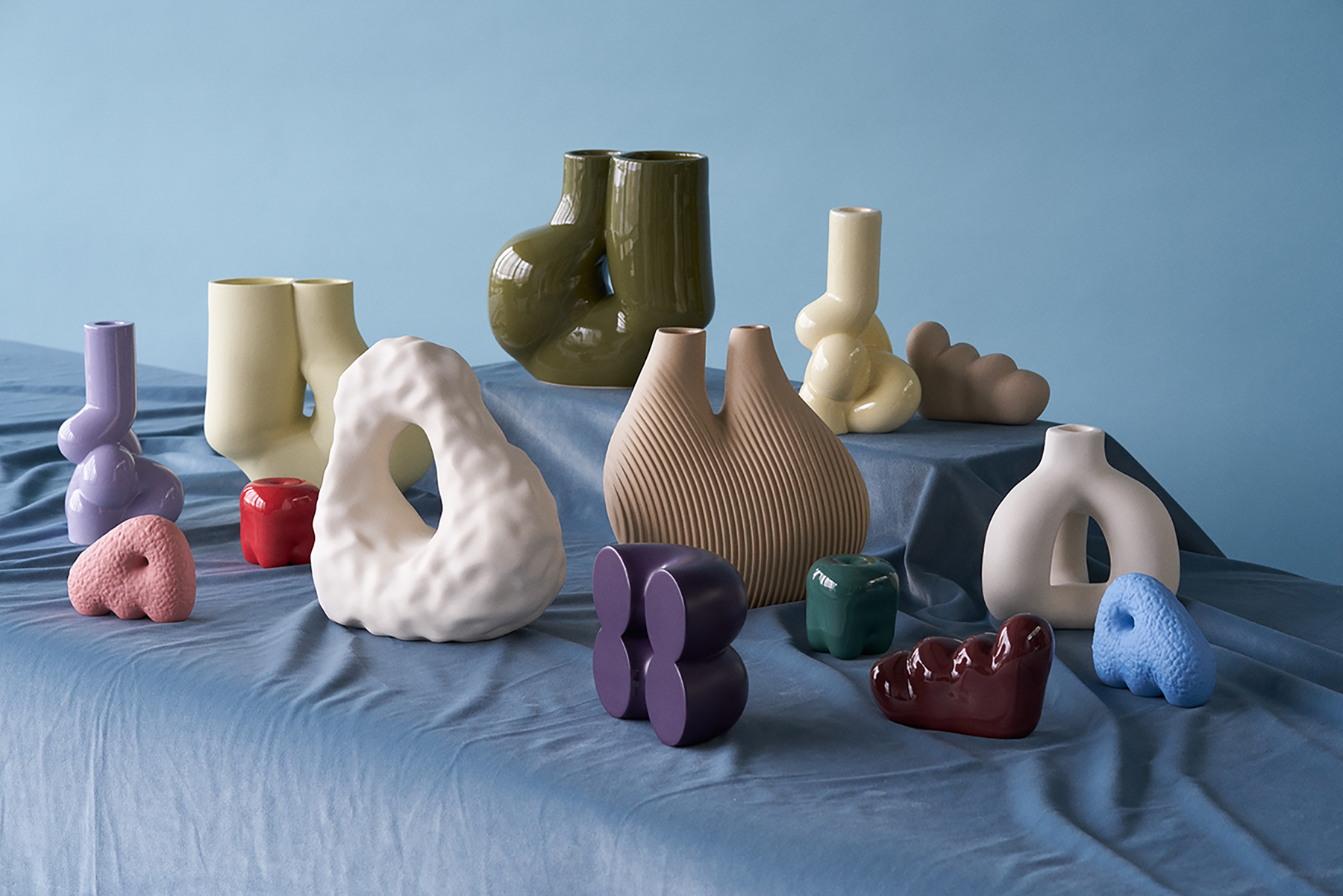 | |
Above: Wang & Söderström for Hay; Photo by Mishael Phillip
What role does collaboration play in your work? How does it inspire your creative vision?
Collaborating as a duo gives us the opportunity to challenge each other’s ideas and creative visions on a daily basis. It makes us more certain of what we want and cultivates a growing environment. But perhaps the best thing about being two is the help and support we can give each other. We have sometimes had the opportunity to do some cross-disciplinary collaborations, with for instance material researchers, developers and writers.
It is always uplifting to work with other disciplines. It challenges and refreshes your own perspective on things. You get a better understanding and greater respect for others’ expertise and at the same time you learn to value your own skills.
 | 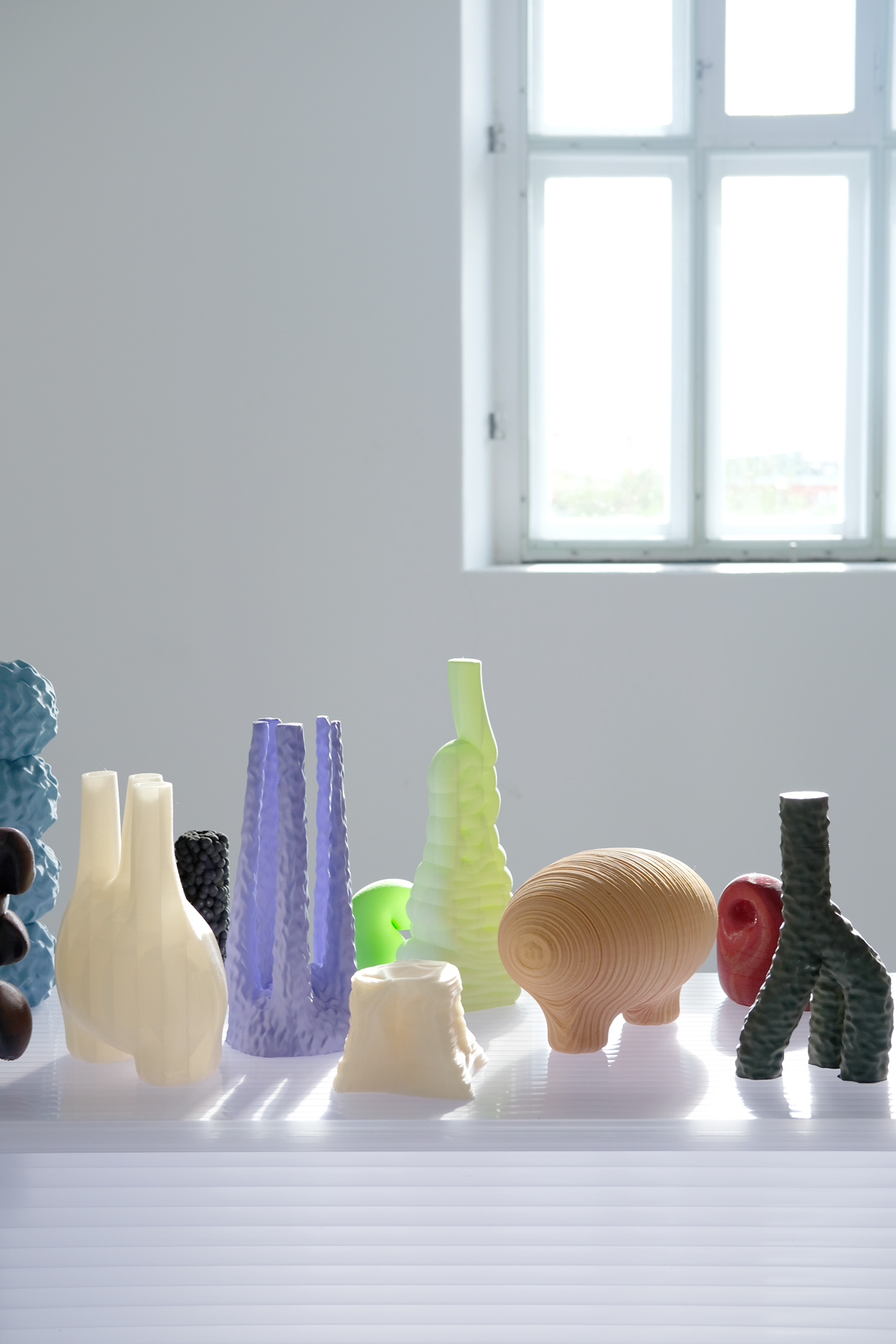 |
 | |
Above: Sano x Wang & Söderström
How does executing work for clients inspire and/or restrict your creative process?
We strive to work with clients that we can relate to and/or support. For us it also important that the client can understand our universe and practice. We see commissioned work as a fun challenge to both capture the client’s vision and add our own approach to it.
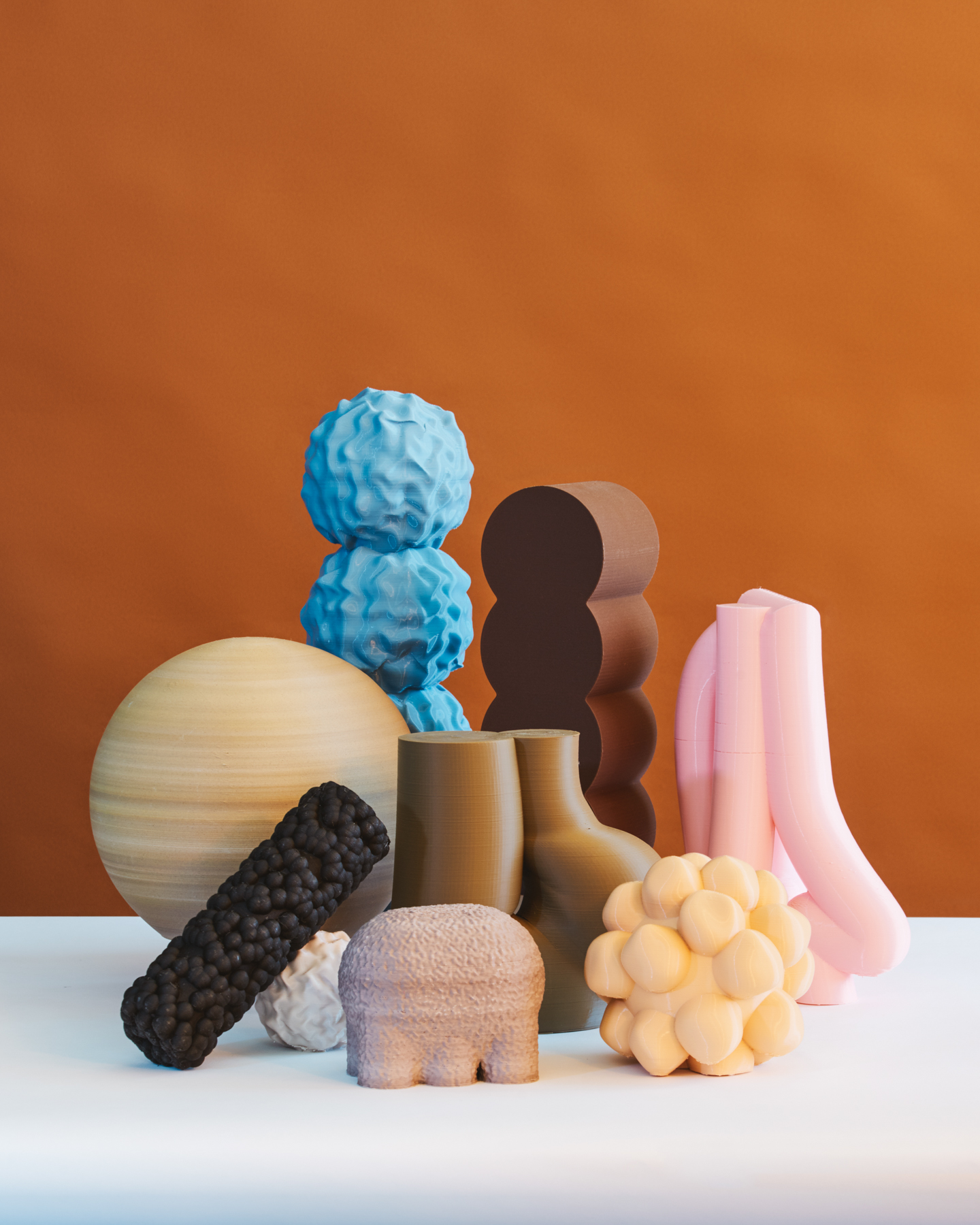 | 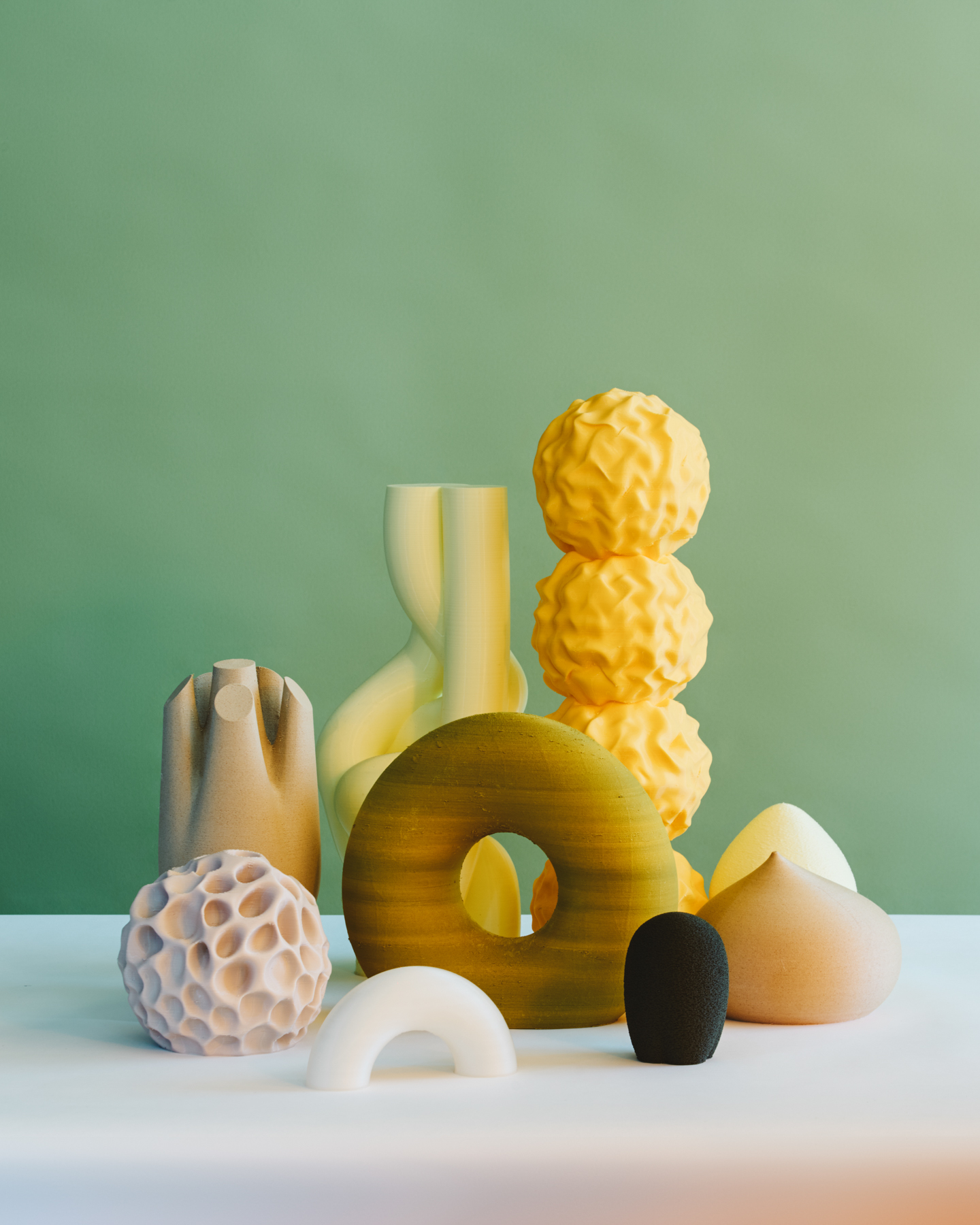 |
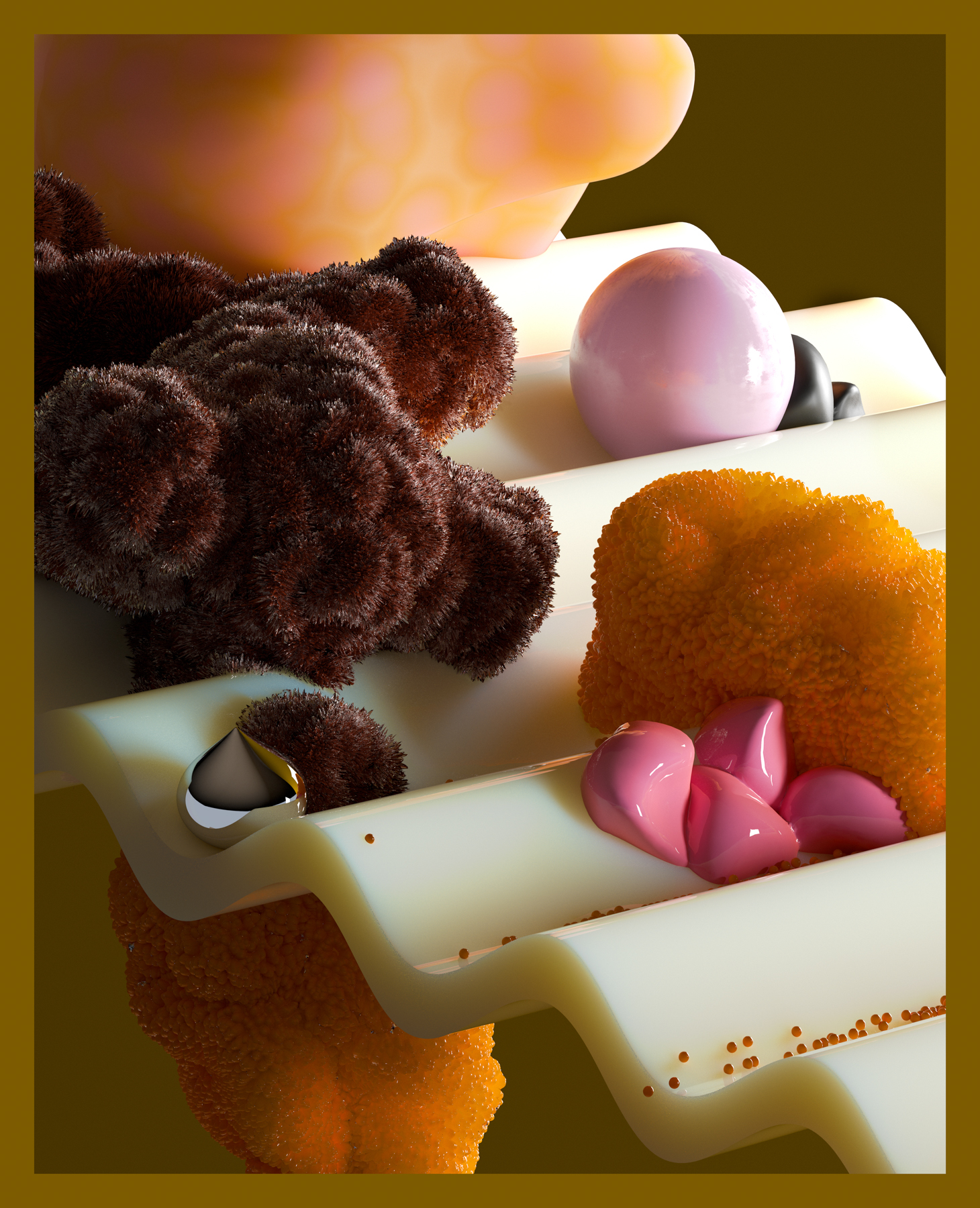 | 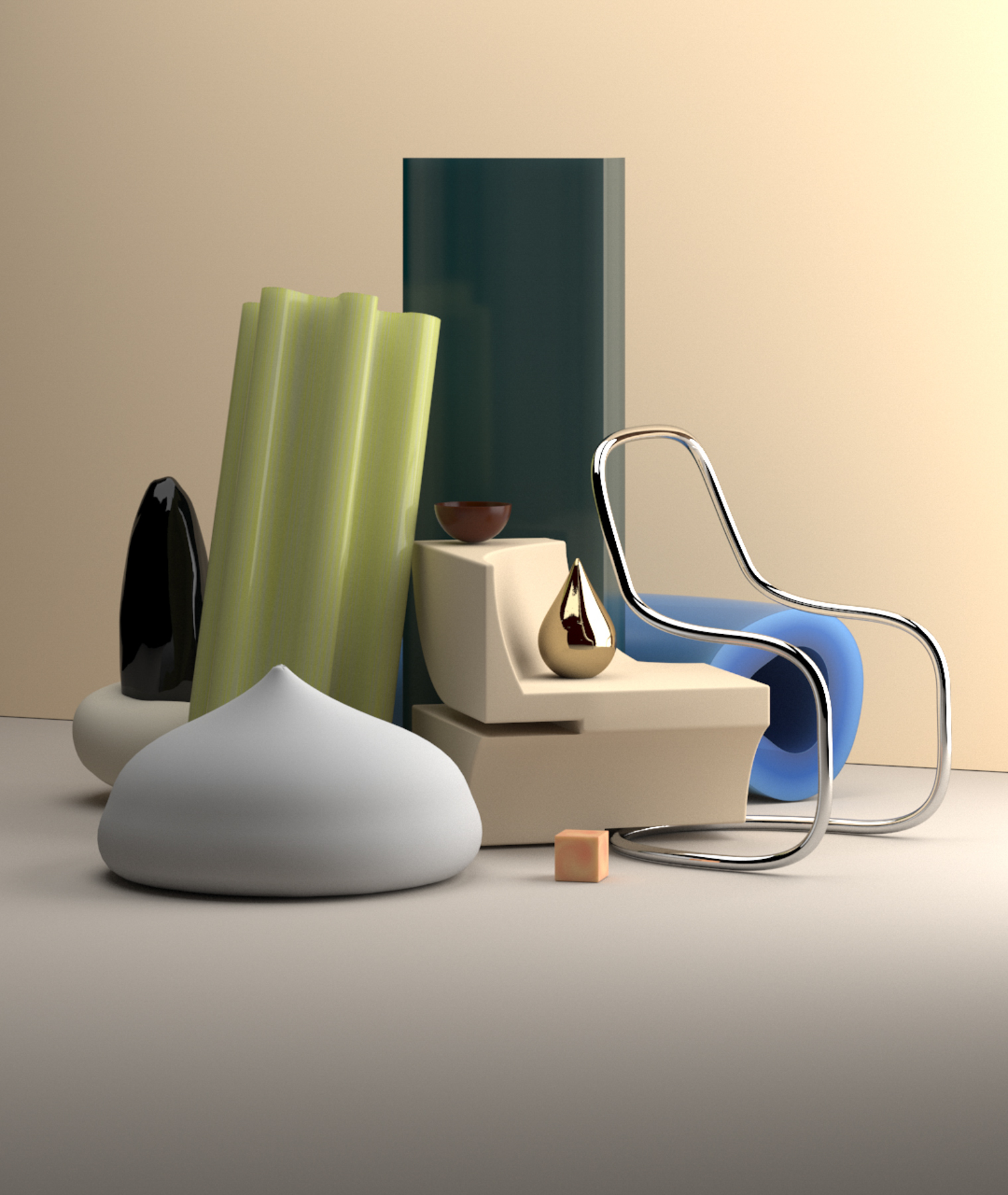 |
Above: Wang & Söderström Common Old Things & Bulky Waste
What is the intended or desired effect of your work?
We hope to create mind tickling and unexpected experiences through both materiality and technology. With ‘unexpected’ we mean impulsive reactions from the viewer or user and that could be created by working with the recognisable but adding the unfamiliar. In that way we really want people to create new relations to materials and technology.
Working in the intersection between physical and digital is a way for us to explore and understand what it means for us humans and our senses as technology will be more and more integrated into our lives. We want to throw out pre-existing conventions regarding the digital and bring out on the human in the digital.

Above: Three Objects With Hats by Wang & Söderström; Photo by Beata Cervin
What are you working on right now?
We are experimenting with soap. It is for a piece to be shown at a group exhibition at the Tallinn Triennial 2021.
See more of Wang & Söderström on Instagram and explore their physical and digital projects.

